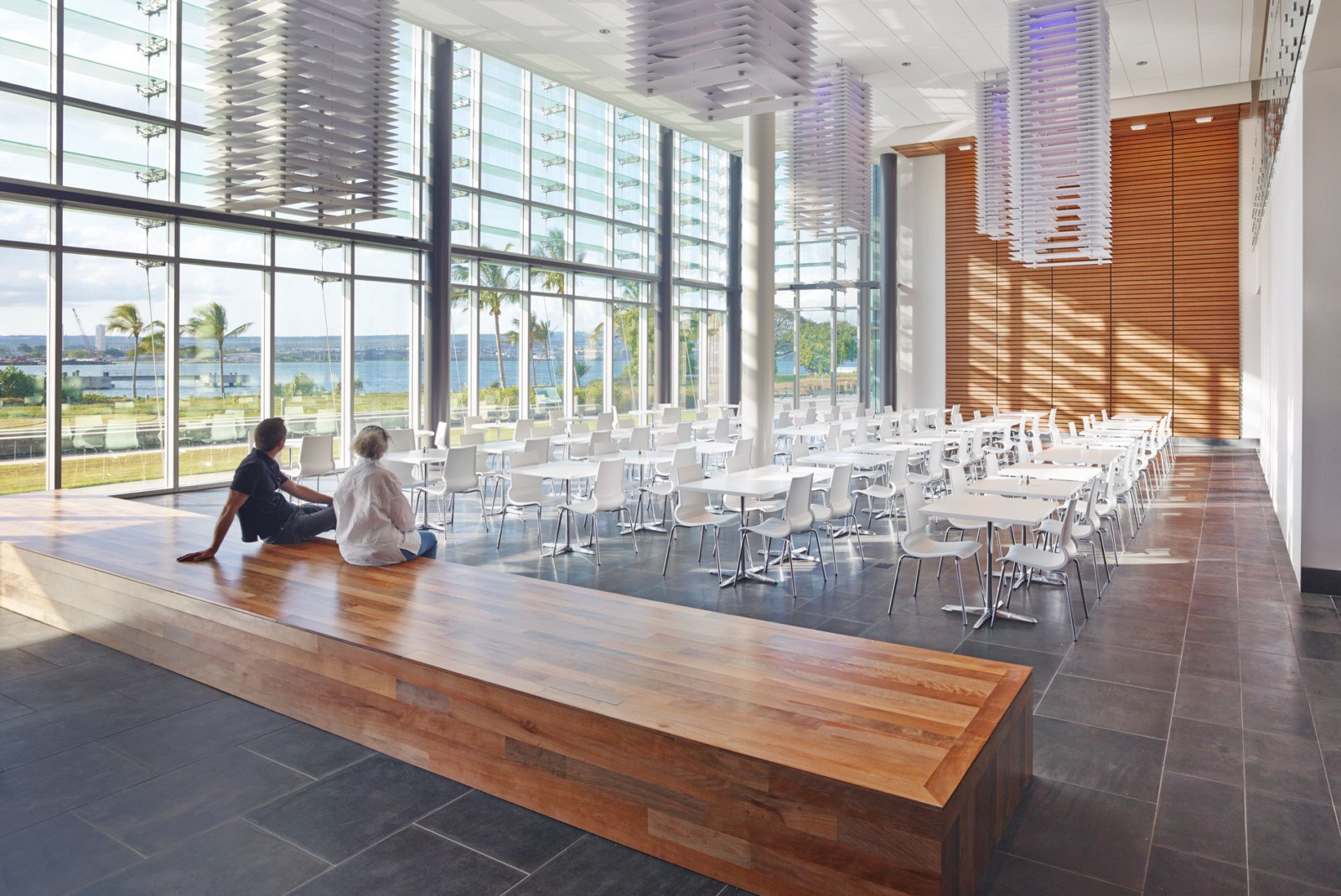Sean Quinn, sustainable design leader in HOK’s San Francisco studio, spoke with Sacramento-based radio stations KNCI, KYMX, KZZO and KHTK about the growth of biophilic design and its impact on the workplace.
Below are excerpted quotes from Quinn’s interview segment:
On biophilic design and its origins:
“Biophilic design is design that incorporates natural materials, light, vegetation, views to nature and other experiences of natural environment into the built one. It’s a concept initially termed ‘biophilia’ by a German social psychologist, Erich Fromm, around 1964. It really wasn’t until the 1980s when more research was being done into the innate need for human connection to nature by E.O. Wilson that the biophilia hypothesis came to be. That’s really the essence: that we involve nature in design and as a result we’re drawn to natural settings that we identify with and love.”
On the biggest benefits of biophilic design:
“The biggest benefit of biophilic design is enhanced health and overall well-being. In a more modern, universal design, spaces can be a bit sterile. We’re trying to enhance community connectedness, enhance creativity and increase productivity. The integration of biophilic elements, whether they’re environmental features, shapes and forms, light or space, tends to reduce stress and create a calming force over a person.”
On modifying spaces to incorporate biophilic design principles:
“One of the first things you can do is begin to incorporate plants. Imagery of nature can be really important. When you’re in a big, expansive office space, even putting up imagery of other natural areas can be a nice, simple connection. For designers, looking at nature and pulling from some of the patterns and colors and embedding those in the finishes can become that next layer. Finally, if you are doing a more embedded process, looking at how you can reincorporate natural light in large footprint office buildings is important. Things like ventilation can come into it, as well as water features, and even sculptures that cue people into what’s going on in the environment around them.”
On the merging of technology and biophilic design:
“Offices over the course of the past 50 years until recently have become the modern-day factories, and they tend to be a bit universal. That allows for flexibility and adaptability, and is intended to increase collaboration. But often those open environments can become noisy and distracting. The benefit of biophilic design is that it returns to vernacular roots. You bring in aspects of culture and context that people respond to holistically. There are ways to advance the means of construction to create spaces that are more interactive. So there’s a need for a duel view, both of the past for understanding culture, context, and nature to provide the foundation for exceptional design. But that needs to be combined with the innovative thinking that’s going on in the building industry. How does technology, both through improved fabrication, finishes and materials, align with some of those natural principles? Even things like 3D printing and automation can enable more customized pieces that could take on natural forms.”
